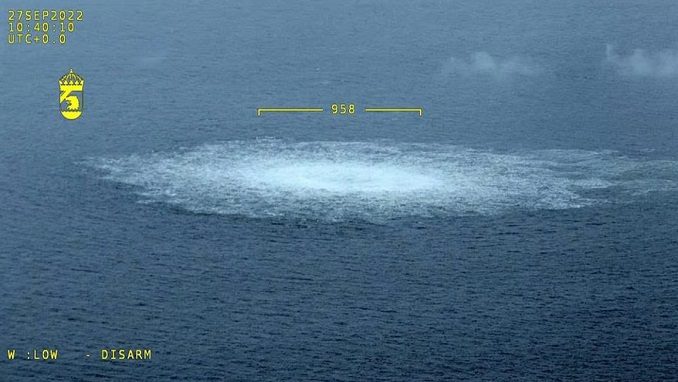
European and US intelligence officials have obtained tentative intelligence to suggest a pro-Ukrainian saboteur group may have been behind the bombing of the Nord Stream gas pipelines last year.
There was no evidence that Ukrainian President Volodymyr Zelenskyy or other Ukrainian government officials were behind the attacks.
German investigators believe the attack on the pipelines was carried out by a team of six people, using a yacht that had been hired by a company registered in Poland and owned by two Ukrainian citizens.
Details about the intelligence remain sketchy and it is unclear what confidence the US intelligence community places in the theory, as well as who may have organized, funded, and directed such a daring attack on the gas pipelines running between Russia and Germany.
But it is suggested that the government of Kyiv did not direct the underwater strike.
In its first reaction, Ukraine’s government dismissed the reports. Mykhailo Podolyak, an adviser to Ukrainian President Volodymyr Zelenskyy, denied the Ukrainian government had any involvement in the pipeline attacks.
Three of the four pipes making up the Nord Stream 1 and 2 undersea gas pipelines from Russia to Germany were destroyed by explosions last September. Germany, Sweden, and Denmark launched investigations into an incident that was quickly established to be a case of “sabotage.”
The attack took place in international waters in the Baltic Sea, near the Danish island of Bornholm, with large amounts of gas rising up from the sea floor.
The prevailing theory at the time of the attack was that the bombing was the work of Russia, seeking to blame the west, but there have been doubts about whether Moscow would want to destroy its own expensively built infrastructure, even if the flow of gas had been halted by the time of the attack.
While investigators had been able to largely reconstruct how the pipelines had been blown up, they had not found any evidence as to who would have tasked the group to carry out an attack, with a “false flag” operation still a theoretical possibility.

Be the first to comment